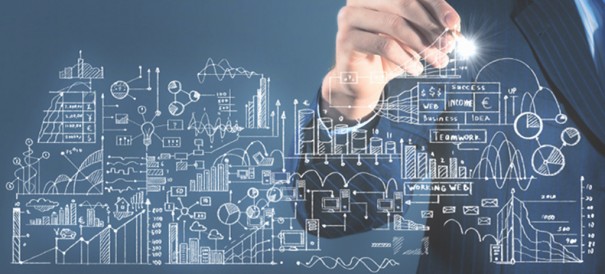Informe Vint-Sogeti: las smart cities generarán en torno al IoE una inversión de 87.000 million euros
El IV informe sobre Internet of Things (Iot), elaborado por el Instituto Vint de Sogeti, apunta que este entorno generará un volumen de negocio de 596.000 millones de euros hasta 2020, con los sectores de construcción y automoción a la cabeza, seguido del desarrollo de las smart cities.
Vint, el Instituto de Innovación de Sogeti, ha publicado el cuarto y último informe sobre el Internet of Things (ver el resto de estudios en Digital AV Magazine), en el que se estima que este entorno generará un volumen de negocio de 596.000 millones de euros en 2022 en todo el mundo.
Los cinco sectores que más contribuirán a este movimiento en el mercado son, according to the Vint Institute of Sogeti, el de construcción (edificios inteligentes), with 213.000 million euros; seguido de la automoción (175.000 million euros), utilities (44.000 million euros); desarrollo de smart cities (21.000 Million) e industria (17.000 million euros).
En el mismo informe, que aglutina estudios sobre IoT de analistas como Pike Research o empresas como Bosch, hace especial hincapié en el concepto de smart cities, que aglutinará inversiones de diversos entornos, tales como el de edificios inteligentes, automóviles y suministradores de energía. Según los datos aportados, since 2010 and up to 2020, el desarrollo de las ciudades inteligentes o de proyectos basados en IoT dentro de ellas generará un volumen de inversiones de 87.000 million euros.
Las ciudades del futuro
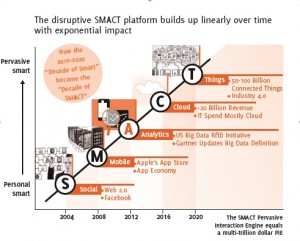 El Instituto Vint ha centrado su último informe sobre IoT precisamente en las ciudades del futuro, analizando cómo este concepto va tomando fuerza y la rápida evolución que está teniendo, basándose en cinco conceptos básicos agrupados bajo las siglas SMACT (Social, Mobile, Analytics, Cloud y Things).
El Instituto Vint ha centrado su último informe sobre IoT precisamente en las ciudades del futuro, analizando cómo este concepto va tomando fuerza y la rápida evolución que está teniendo, basándose en cinco conceptos básicos agrupados bajo las siglas SMACT (Social, Mobile, Analytics, Cloud y Things).
La rápida evolución de las smart cities toma como base que no sólo actualmente la mitad de la población mundial vive en urbes, sino que en el año 2050 esta proporción será del 75%. In addition, the 80% de las emisiones de CO2 y el 75% del consumo de energía se producen hoy en día en ciudades y en ellas se genera el 80% de la riqueza económica.
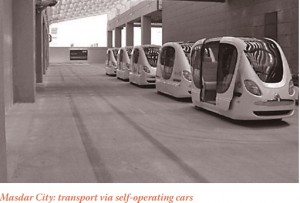 Todo ello conlleva que las ciudades inteligentes son un foco de atención para gobernantes e industria y su evolución dependerá del debate existente actualmente sobre los distintos modelos de aproximación a este concepto, que Sogeti clasifica en su informe en tres categorías: City in a Box (ciudades ‘a la carta’ en cuyos planos se contempla toda la infraestructura necesaria), Sensible City (fundamentada en el uso de sensores que recogen el comportamiento y rutinas de sus habitantes) and City as a Platform (conjunto de aplicaciones y tecnología que recogen los datos y los aplican a las infraestructuras).
Todo ello conlleva que las ciudades inteligentes son un foco de atención para gobernantes e industria y su evolución dependerá del debate existente actualmente sobre los distintos modelos de aproximación a este concepto, que Sogeti clasifica en su informe en tres categorías: City in a Box (ciudades ‘a la carta’ en cuyos planos se contempla toda la infraestructura necesaria), Sensible City (fundamentada en el uso de sensores que recogen el comportamiento y rutinas de sus habitantes) and City as a Platform (conjunto de aplicaciones y tecnología que recogen los datos y los aplican a las infraestructuras).
Sea cual sea el modelo de aproximación, el informe señala once áreas clave dentro de las urbes para el despliegue de IoT: bless you, alimentación, traffic, logística, administración, networks, venta al por menor, cadenas de suministro, contadores inteligentes, turismo y e-administración.
Currently, y según el informe de Sogeti, ya existen proyectos que reflejan algunos de estos conceptos. Like this, la ciudad de Masdar, en el Emirato de Abu Dabi, es un ejemplo de City in a Box. Diseñada por el arquitecto británico Norman Foster, esta urbe tiene 5 Km. cuadrados de superficie para 40.000 habitantes, y en su construcción están involucradas 1.500 enterprises. Se prevé que estará terminada entre 2020 and 2025.
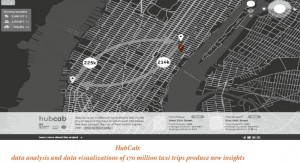 En Nueva York existe un proyecto denominado HubCab que muestra el concepto de Sensible Cities, consistente en que 13.500 taxis de esta ciudad norteamericana disponen de tecnología para recoger datos de los más de 170 millones de viajes realizados durante un año por los habitantes de la ciudad; esta información permite una toma de decisiones más rápida e inteligente.
En Nueva York existe un proyecto denominado HubCab que muestra el concepto de Sensible Cities, consistente en que 13.500 taxis de esta ciudad norteamericana disponen de tecnología para recoger datos de los más de 170 millones de viajes realizados durante un año por los habitantes de la ciudad; esta información permite una toma de decisiones más rápida e inteligente.
El conjunto de datos contiene las coordenadas GPS y horarios de demanda de este servicio, así como recorridos, destinos y zonas más frecuentadas. Las cifras muestran que, sin reducir la comodidad del viajero, the 40% de los taxis se podrían compartir, lo que supondría una reducción de CO2 de 423 gramos por kilómetro de trayecto.
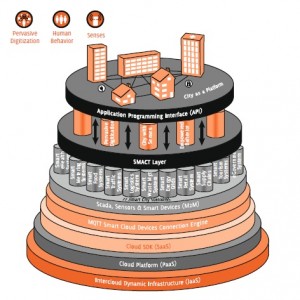 Last, City as a Platform es el concepto donde confluyen el mundo digital y el físico. Los datos recogidos a través de sensores sobre el comportamiento humano se trasladan al mundo físico, en concreto a las infraestructuras para mejorar su funcionamiento.
Last, City as a Platform es el concepto donde confluyen el mundo digital y el físico. Los datos recogidos a través de sensores sobre el comportamiento humano se trasladan al mundo físico, en concreto a las infraestructuras para mejorar su funcionamiento.
In this way, con la utilización de sensores y análisis de datos sobre el comportamiento, junto con la información sobre las infraestructuras, los coches pueden circular por la ciudad de forma autónoma sin ningún problema, además de poder ajustar los elementos físicos de la ciudad a los flujos de movimiento.
Según refleja el informe del Instituto Vint, si el 90% de todos los estadounidenses viajaran en coches dirigidos por ordenador se evitarían 4,2 millones de accidentes, se salvarían 21.900 vidas y se ahorrarían 450 mil millones de dólares.
You liked this article?
Subscribe to our Feed And you won't miss a thing.



